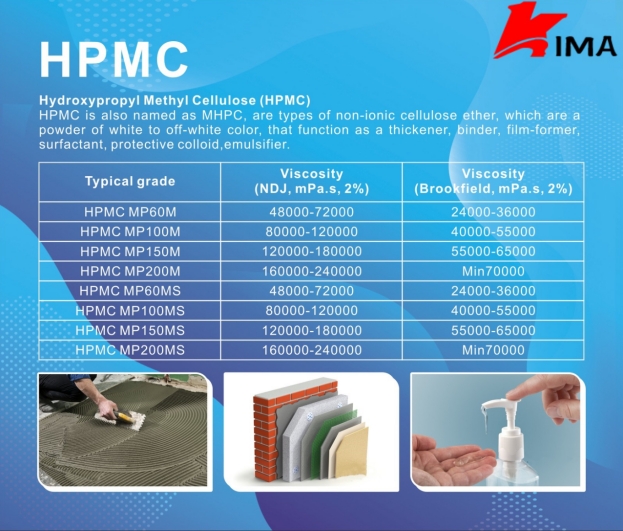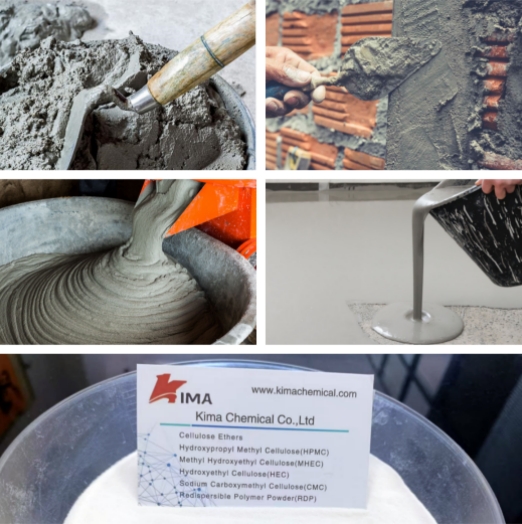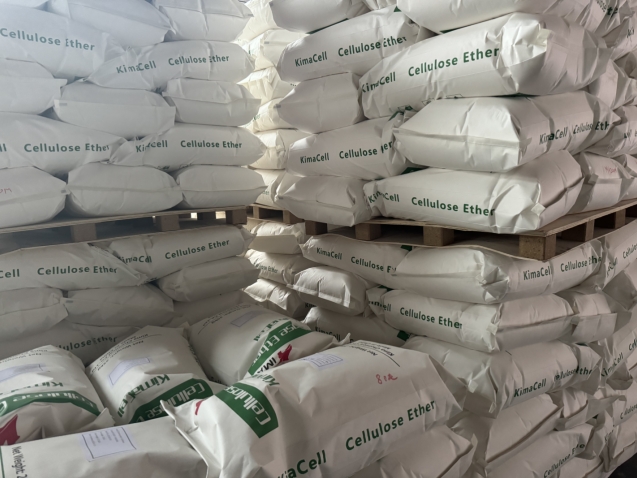Cellulose ethers are a class of compounds derived from cellulose, which is the main structural component of plant cell walls. These ethers are used in various industries, including the construction sector, where they play a crucial role in the formulation of cement-based materials. Their inclusion in cement products has significant impacts on the workability, bonding, and performance of cementitious mixtures.

1. Introduction to Cellulose Ether
Cellulose ether is created by chemically modifying cellulose with alkyl or hydroxyalkyl groups. Common types of cellulose ethers used in the cement industry include hydroxyethyl cellulose (HEC), methyl cellulose (MC), and hydroxypropyl methyl cellulose (HPMC). These products are water-soluble and are typically used in dry-mix mortars, adhesives, plaster, and other cement-based applications. Their key characteristics—such as thickening, film-forming, and water-retention abilities—are crucial for enhancing the performance of cement products.
2. Mechanisms of Cellulose Ether in Cement
In cementitious materials, cellulose ether performs several functions that contribute to the bonding properties of the mixture. The role of cellulose ether in cement bonding can be broken down into the following key mechanisms:
a) Water Retention and Hydration Control
One of the primary roles of cellulose ether in cement bonding is to retain water in the mixture. The cellulose ether molecules interact with water molecules, forming a network that helps retain moisture in the cement paste. This ensures that the cement particles remain hydrated during the setting and curing process.
Water retention is vital for achieving the desired consistency and preventing premature drying, which can lead to cracks and reduced bonding strength. By regulating water retention, cellulose ether helps control the rate of hydration, promoting stronger bonds between the cement particles. This results in improved compressive strength, reduced shrinkage, and enhanced durability.
b) Improvement of Workability
Workability refers to the ease with which a cement mixture can be manipulated and applied. The incorporation of cellulose ether improves the workability of cementitious products by enhancing their viscosity. The ether molecules form a gel-like structure within the mixture, allowing for better cohesion and plasticity. This results in a smoother, more uniform application and an improved ability to fill molds, joints, and surfaces.
The increased viscosity also contributes to a better bonding effect, as the cement paste remains in place more effectively without excessive flow or segregation. As a result, cellulose ether helps produce products with superior finishing properties, such as plaster and tile adhesives, where smoothness and consistency are crucial.
c) Enhanced Adhesion and Bonding Strength
Cellulose ethers can also contribute to enhanced adhesion and bonding strength in cement-based materials. When added to mortar or adhesive formulations, these ethers help improve the bond between the cement and various substrates, such as tiles, stone, concrete, and ceramics. This is particularly important in applications like tile adhesives, where the cement needs to form a strong bond with the surface to ensure long-lasting results.
The ether molecules create a thin film that acts as a bridge between the cement and the substrate, enhancing the mechanical bonding. The film also improves the rheological properties of the mixture, making it easier to spread and ensuring better adhesion coverage. Overall, cellulose ethers enhance the ability of cementitious materials to form strong, durable bonds under a variety of environmental conditions.

d) Reduced Shrinkage and Cracking
Shrinkage during the curing process is a common issue with cement-based materials, leading to cracking and poor bonding quality. Cellulose ether helps mitigate this problem by improving the water retention and hydration control of the mixture. By ensuring a more uniform and prolonged hydration process, cellulose ether minimizes the chances of excessive shrinkage, which can weaken the bond between the cement particles.
The plasticizing effect of cellulose ether helps the cement paste remain flexible, allowing for some expansion and contraction without the formation of cracks. This results in improved durability and structural integrity over time, especially in applications where the material is subjected to temperature fluctuations or mechanical stresses.
e) Thickening and Gel-Forming Properties
Another important function of cellulose ether in cement bonding is its thickening and gel-forming properties. When added to a cement mixture, cellulose ether swells and forms a gel-like structure, increasing the viscosity of the paste. This thickening effect is particularly valuable for improving the stability of thick, viscous mortars or adhesives, preventing segregation of the components, and ensuring uniform consistency during mixing and application.
The gel structure created by cellulose ether helps to distribute the cement particles more evenly throughout the mixture, facilitating a uniform bond and reducing the risk of weak spots. This is crucial for ensuring that the final product has consistent strength and performance across its surface.
3. Benefits of Cellulose Ether in Cement Bonding
The use of cellulose ether in cement-based products offers a wide range of benefits that enhance the performance of the final product. These benefits include:
a) Improved Workability and Ease of Application
Cellulose ether helps to improve the overall workability of cement products. The enhanced flow properties make it easier to spread, apply, and finish cement mixtures. This is especially important in applications such as plastering, tiling, and grouting, where ease of handling and a smooth surface finish are critical.
b) Enhanced Adhesion and Durability
By improving adhesion to various surfaces, cellulose ether contributes to the long-term durability and reliability of cementitious materials. The strong bond between the cement and substrate ensures that the material remains intact and functional for extended periods, even under harsh conditions.

c) Reduced Drying Time and Cracking
Cellulose ether helps control the drying process by retaining moisture in the mixture, which reduces the likelihood of cracking and shrinkage. This results in a more stable product that performs better in both the short and long term.
d) Increased Flexibility and Plasticity
The plasticizing effect of cellulose ether increases the flexibility and plasticity of the cement mixture, making it less prone to cracking and more adaptable to changes in temperature and humidity. This flexibility is particularly valuable in applications where the cement is subject to movement or external forces.
Cellulose ether plays an indispensable role in the bonding and performance of cementitious materials. By improving water retention, workability, adhesion, and shrinkage control, cellulose ether significantly enhances the quality and durability of cement products. The use of cellulose ether in cement-based formulations is essential for creating high-performance adhesives, mortars, plasters, and other construction materials, making it an integral component of modern cement applications. The benefits of cellulose ether extend beyond simple bonding, contributing to the overall strength, flexibility, and longevity of cement-based structures.
 English
English 日本語
日本語 français
français Deutsch
Deutsch Español
Español italiano
italiano русский
русский português
português العربية
العربية Türkçe
Türkçe Nederland
Nederland






